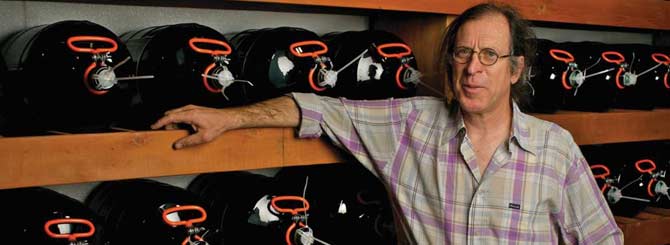I noticed that there are an enormous amount of articles about Randall Grahm. The one below is fairly extensive and really confirms again what we already know, that there are many different opinions about what wine should be etc. I included a few highlights from the article that give some idea of what his opinions are.
https://www.nataliemaclean.com/blog/videos/randall-grahm-california-wine-bonny-doon/
The Rhône region got its first big break in the 1980s, when the powerful U.S. wine critic Robert Parker started giving the French wines high scores. That endorsement also helped their New World counterparts. Today, syrah is the fastest-growing, most popular Rhône wine in America—thanks to the Australian invasion of the shiraz, the same grape with a slightly different name. It’s made in a ripe, round style that’s less austere than the French version.
But Grahm isn’t a fan. He describes Australian shiraz as a caricature of syrah: “It’s a thoroughly corrupted grape; it’s got too much of everything. It is not what syrah is about. Syrah is a very refined grape, not a powerhouse wine. It’s a finesse wine, and that’s not a style that’s particularly encouraged in Australia.
To be successful today, Grahm says, wine must be “optically opaque, alcoholic, tannic and woody as hell—its vinous Viagrafication.” Despite this sensory onslaught, he opines, “It might be nice if the tannins were strong but on some level soft—sort of like George Clooney or Harrison Ford.”
He believes that winemakers do have a choice: “Either follow your own vision of producing a wine that the world needs—a wine of originality and distinctiveness—or else just create the illusion of distinctiveness by amping up the volume. If you’re in Burgundy, distinctiveness arises from the soil. In the New World, the dilemma is how to legitimize your efforts without relying on the usual suspects: concentration, big fruit, new wood, the
Wine Spec and Parker.”
Getting the timing right is essential for harvest. Pick too early in the season, and the grapes may not be ripe; too late, and excess sugar converts into a clobbering alcohol without any balancing acidity. Still, many New World vintners deliberately pick late in the season. Grahm criticizes these “high-impact wines” as boringly overripe. “As primates, we prefer ripe fruit, whether it’s bananas or grapes. It’s just human nature,” he says. “But these wines are like baby food for grown-ups—puréed things with butter and cream in them.” He feels that highly alcoholic wines overwhelm subtle food, just as the new trend to fusion cooking overwhelms nuanced wines.
In fact, New World wines have become increasingly alcoholic in the last five years. Where 10-12 percent alcohol by volume used to be the norm, modern blockbuster reds, such as shiraz and cabernet, often weigh in at 15 percent. Not only do these wines assault the palate, but they make their presence known only when you get up from the dinner table and discover that your legs have turned to jelly.



